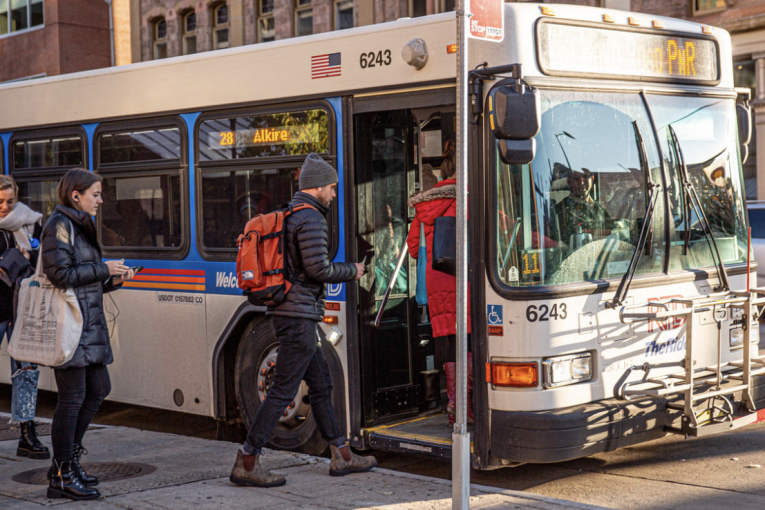
![]()

By Rodrigo Villegas
Last month, Gov. Gavin Newsom announced a budget proposal to address California’s anticipated 22.5 billion dollar deficit. The proposal included cutting two billion dollars from transit capital construction projects.
Transit agencies and their advocates swiftly expressed their opposition to the proposal. They implored legislators to leave the funding for new infrastructure untouched, and recently added a request for lawmakers to allocate more funding over several years for short-term operational needs. The request comes from a coalition of transit advocates organized by the California Transit Association, a nonprofit organization that supports California’s transit agencies through advocacy and education.
These requests stem from the various problems the state’s transit systems face: a decline in ridership, proposed state funding cuts, and an impending fiscal cliff. Transit agencies experienced a sharp decline in ridership at the beginning of the COVID-19 pandemic. As a result, they received less money at the fare box and depended on federal relief funding during the pandemic to resume operations.
While ridership has steadily increased recently, it is not near pre-pandemic levels due to more people working remotely and an increase in ride-hailing apps. Furthermore, federal relief funding is coming to an end, so transit agencies find themselves in a precarious position. California State Senator Scott Wiener reported to CalMatters, saying that it “could lead to significant service cuts, which is a downward death spiral for some of these agencies.”
I disagree with the proposed state funding cuts for transit agencies. Public transit is an important need for Californians who lack access to a car.
During summers when I stayed home while my family left for vacation in Mexico, I relied on public transit to arrive at my various destinations. When I needed to grocery shop, get to my part-time job, or hang out with friends—I took the bus. Public transit provided a reliable mode of transportation that allowed me to live on my own.
I know of friends and family members who do not own a car because they cannot afford one, so they similarly depend on public transit. They would use the bus to get to work, school, and other places. Service cuts would put further restrictions on their mobility and present a tough obstacle to overcome without other affordable modes of transportation.
Furthermore, public transit plays a vital role in meeting the state’s climate goals.
Transportation surpasses the industrial, electrical, and residential sectors as the greatest contributor to greenhouse gas emissions. To meet California’s climate goals, the California Air Resources Board—a government agency dedicated to protecting the public from air pollution and tackling climate change—intends to decrease car dependence.
Zak Accuardi, a senior transportation advocate at the Natural Resources Defense Council, told The Sacramento Bee that public transit is “the most effective tool that we have to provide people better alternatives for driving.” Without options for transportation, people resort to their cars to get around.
In addition to maintaining funding as is, transit agencies should seek out other methods for funding.
On Monday, State Senate and Assembly transportation committees gathered in a joint hearing to debate the financial state of California’s public transit systems, strategies to revive ridership, and to address the approaching fiscal cliff. One important conclusion made is that the fare-box recovery paradigm is not a feasible solution.
In order to receive their entire allotment of state funding, transit agencies must fulfill fare-box goals. With ridership not near pre-pandemic levels currently, I imagine transit agencies are struggling to meet those goals.
With transit agencies struggling to produce revenue through ridership, cuts to their state funding would create more issues. State funding should remain intact until transit agencies find other methods of securing funding or revenue.